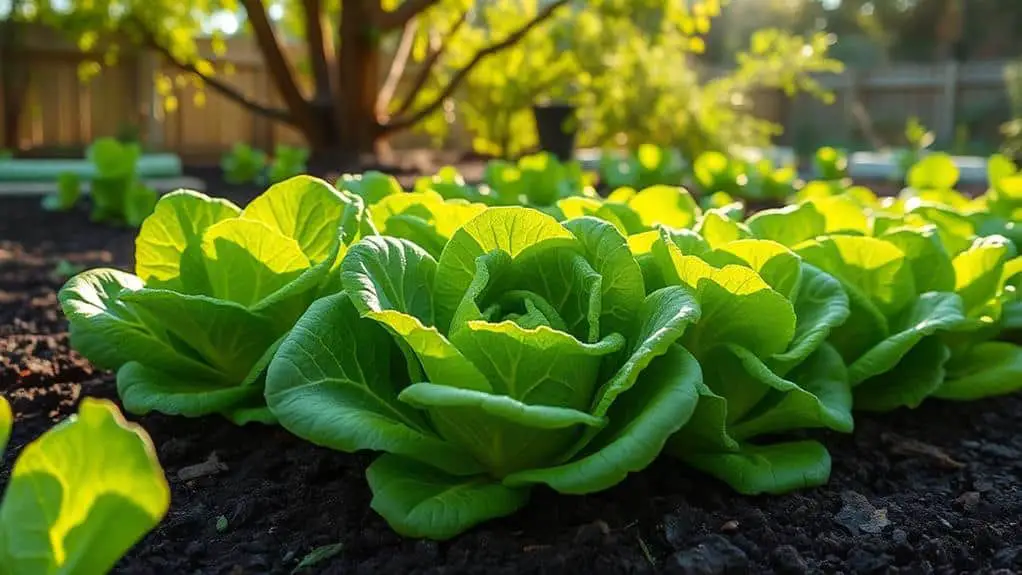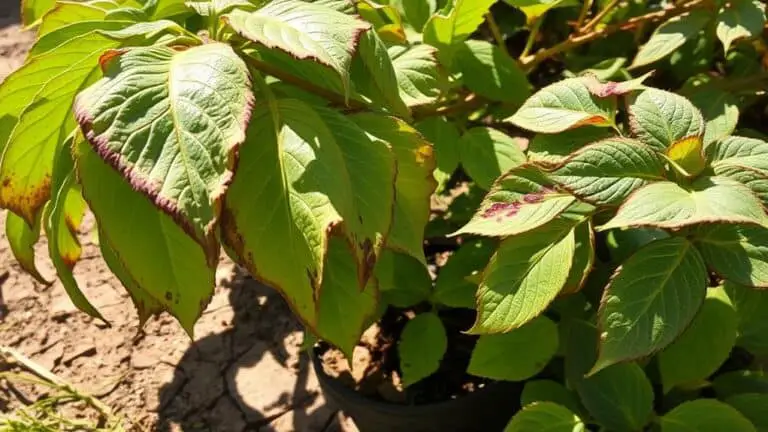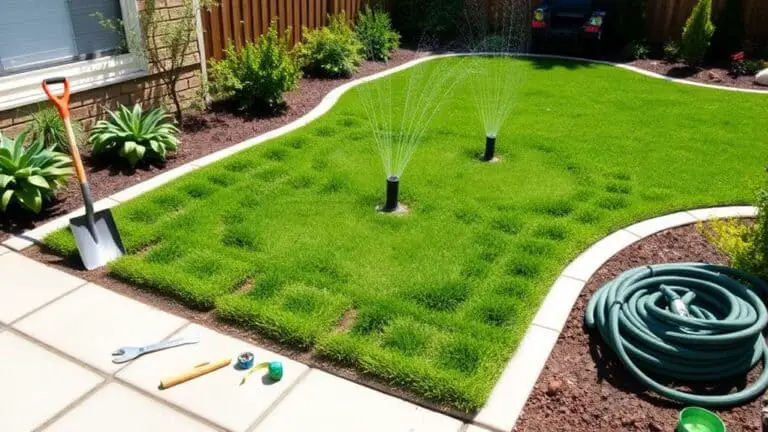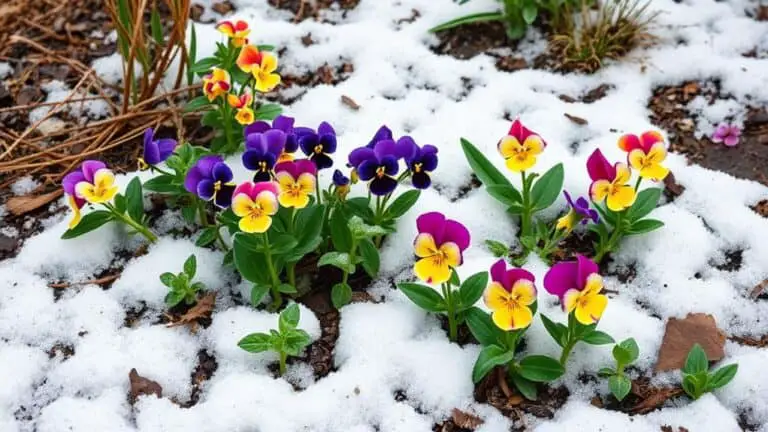The Easiest Fruits And Vegetables To Grow For Beginners
When I first started gardening, I quickly realized how overwhelming it could be to choose the right plants, especially as a beginner. It turns out that some fruits and vegetables are much easier to grow than others. For instance, lettuce and radishes are great for quick results, while strawberries offer the joy of fresh, homegrown fruit with relatively little effort. Zucchini and tomatoes can provide abundant harvests, making them rewarding choices for novices. But what about peas, cucumbers, kale, and carrots? Let's explore why these might be your next best picks for a thriving garden.
Lettuce

Lettuce is an excellent starting point if you're new to gardening and enthusiastic for quick results. It's easy to grow and you'll see those green leaves sprout up in just about 30 days.
Lettuce thrives in cooler weather and can even handle a light frost, making it perfect for early spring or late fall. It prefers well-drained soil and regular watering to keep the soil moist but not soggy.
A great thing about lettuce is continuous harvesting. By picking the outer leaves, you allow the inner ones to keep growing, giving you a longer harvest period.
Whether you choose head, loose-leaf, or romaine, you'll enjoy a variety of textures and flavors. Happy gardening!
Radishes
Radishes are a fantastic choice for beginner gardeners looking for quick and rewarding results. These fastest-growing veggies can be ready to harvest in just about 30 days after sowing.
Radishes thrive in cool weather, making them perfect for both spring and fall gardens. They don't need much space, so they're excellent for container gardening. You can plant them directly into the soil or even multi-sow them for a continuous harvest.
- Radishes come in various flavors and textures, including red, white, and black varieties.
- To get the best flavor, harvest them when they're about 1 inch in diameter.
- Leaving them in the ground too long can lead to a woody texture.
Happy planting! Your salads and garnishes will thank you.
Peas

Now that we've explored the wonders of radishes, let's turn our attention to another rewarding crop for beginner gardeners: peas. Peas are a cool-season crop that thrive in well-drained soil and full sun. You can sow them as early as two to four weeks before the last frost, so they're one of the first vegetables to plant in spring. They germinate within 7-14 days and offer a quick return, ready for harvest in about 60-70 days. Peas are nitrogen-fixing, improving soil fertility for future crops. There are different types—snap, snow, and shelling peas—each with unique culinary uses.
| Type | Planting Time | Harvest Time |
|---|---|---|
| Snap | Early spring | 60-70 days |
| Snow | Early spring | 60-70 days |
| Shelling | Early spring | 60-70 days |
Happy planting!
Zucchini
Let's talk about zucchini!
It's a fantastic choice for beginners because one plant can give you lots of fruits, sometimes up to 10 pounds in a single season.
Just make sure to plant them in warm soil and give each plant about 3 feet of space, and you'll be on your way to a bountiful harvest.
Optimal Growing Conditions
Zucchini's love for warmth makes it a summer garden favorite, thriving best when soil temperatures hit at least 70°F.
To guarantee ideal growing conditions, make sure your zucchini gets full sun, at least 6-8 hours daily. Plant it in well-draining, compost-enriched soil to keep moisture levels just right without causing waterlogging. Consistent watering is key, about 1 inch per week, to support healthy growth.
Here's a quick checklist to help you succeed:
- Full sun: Ensure your zucchini gets at least 6-8 hours of direct sunlight.
- Well-draining soil: Use compost-enriched soil that retains moisture but drains well.
- Proper spacing: Space plants about 3 feet apart to prevent overcrowding and encourage healthy growth.
Follow these tips, and your zucchini will thrive!
Harvesting and Yield Tips
Harvesting zucchini at the right time can greatly impact both the quality and quantity of your yield.
I've found that picking zucchinis when they're small to medium-sized, around 6-8 inches long, gives the best flavor and texture. If they get too big, they can become tough and seedy. Harvesting every 2-3 days once they start maturing is key.
Regular watering, about 1 inch per week, supports ideal growth and fruit development.
Zucchini plants are prolific, often yielding 6-10 pounds of fruit per plant in a season. To keep this production going, remove any overripe fruits so the plant can focus on new ones.
With these tips, you'll enjoy a bountiful zucchini harvest!
Cucumbers

As a fast-growing warm-season crop, cucumbers can be a rewarding addition to any beginner's garden. They're easy to grow if you follow a few simple tips.
First, make sure your cucumbers get full sun and consistent moisture; they need about 1 inch of water per week. Homegrown cucumbers often taste better and have a crunchier texture than store-bought ones.
Here's what you need to know:
- Varieties: Choose from slicing cucumbers for salads or pickling cucumbers for canning.
- Trellising: Save space and improve air circulation by using a trellis.
- Harvest: Cucumbers are typically ready to harvest about 6 weeks after planting.
With these steps, you'll enjoy fresh, delicious cucumbers from your own garden!
Beans
Beans are an excellent choice for beginner gardeners due to their quick germination and ease of care. They germinate in just 7-10 days, so you'll see progress quickly.
Beans thrive in full sun and need a frost-free environment, so plant them after the last frost. You can choose between bush beans, which are great for small spaces, and pole beans, which need support structures.
Regular harvesting is essential; it encourages multiple harvests throughout the season. Plus, beans are nitrogen-fixing plants, which means they improve soil health by adding nutrients back into the ground. This is fantastic for future crops.
With beans, you'll have a rewarding and beneficial gardening experience, making them perfect for beginners like you.
Kale

Kale is a fantastic choice for beginners because it thrives in cooler temperatures and can even tolerate frost, making it perfect for early spring and fall planting.
You can start harvesting baby leaves just 25 days after planting, and mature leaves in about 60 days, which means you'll have fresh greens for months.
To keep your kale growing strong, plant it in well-drained, fertile soil and make sure it gets consistent moisture.
Ideal Growing Conditions
When growing kale, you'll find that it thrives best in cooler temperatures, making it perfect for early spring or fall planting.
Kale loves well-drained, nutrient-rich soil with a pH level between 6.0 and 7.5 for ideal growth. Regular watering is essential to maintain moist soil but be careful not to waterlog it. Aim for about 1 to 1.5 inches of water per week.
Here are a few tips to help you get started:
- Confirm your soil is well-drained and nutrient-rich.
- Space your plants 12 to 18 inches apart to promote air circulation.
- Water regularly to keep the soil moist without overdoing it.
Harvesting and Maintenance
Curious about how to make the most out of your kale harvest? Start by cutting the outer leaves first, allowing the inner ones to grow for a longer harvest season.
Kale is ready about 50 to 60 days after planting. For the sweetest flavor, aim for a late fall harvest after a light frost.
Keep an eye out for pests like aphids and caterpillars, and always wash the leaves thoroughly to guarantee cleanliness.
To maintain healthy growth, water your kale consistently, especially during dry spells. Using organic fertilizers every few weeks can also help.
With these tips, you'll have a plentiful, tasty kale harvest!
Carrots
Carrots, a staple in many home gardens, thrive in loose, well-drained soil under full sun, taking about 70 to 80 days to mature from seeds to harvest.
When growing carrots, it's important to remember a few key points to guarantee a bountiful crop.
- Consistent watering: Keep the soil moist to prevent carrots from becoming tough or woody.
- Thinning seedlings: Once seedlings are a few inches tall, thin them out to about 2 to 4 inches apart. This gives each carrot enough space to grow properly.
- Popular varieties: For beginners, Nantes and Imperator varieties are perfect due to their sweet flavor and ease of growth.
With these tips, even a beginner can successfully grow delicious, homegrown carrots.
Strawberries

Growing strawberries is a rewarding experience, and it's easier than you might think!
These plants love well-drained soil and need plenty of sunlight, at least 8 hours a day, to flourish.
Ideal Growing Conditions
Strawberries thrive when you provide them with well-drained soil that's enriched with organic matter.
They need full sun exposure for at least 6 to 8 hours a day to produce sweet, juicy fruit.
Consistent watering is crucial, aiming for about 1 inch of water per week, preferably applied in the morning to minimize disease risks.
Planting in early spring after the last frost guarantees strawberries establish well and produce fruit by late spring to early summer.
For ideal growing conditions, focus on:
- Well-drained soil with plenty of organic matter.
- Full sun exposure for at least 6-8 hours daily.
- Consistent watering, about 1 inch per week.
Following these tips will help you grow delicious strawberries with confidence!
Planting and Care
When it comes to planting and caring for strawberries, start by selecting a sunny spot in your garden with well-drained soil enriched with organic matter.
Early spring is the best time for planting strawberries. This allows them to establish roots before summer heat arrives.
Keep the soil moist by providing regular watering, aiming for about 1 inch of water per week. Morning watering helps prevent diseases.
To further care for your strawberries, mulch around the plants. Mulching helps retain moisture, suppress weeds, and keeps the fruit clean as they grow.
With the right care, you'll be enjoying strawberries fresh from the garden. Remember, a sunny spot and consistent care will lead to a great harvest.
Harvesting and Uses
Harvesting strawberries is a delightful and rewarding experience that every gardener looks forward to. You'll know they're ready when they're full red, fragrant, and come off the vine easily. This usually happens in late spring or early summer, depending on your climate and the strawberry variety.
Regular picking encourages more fruit, so keep at it!
Strawberries are versatile in the kitchen. You can:
- Eat them fresh
- Add them to yogurt or pancakes
- Use them in desserts like pies and tarts
For the best flavor, plant strawberries in well-drained soil and keep the moisture consistent. They need at least 8 hours of full sunlight daily.
Don't forget to mulch around the plants to retain moisture and promote healthy fruit development.
Happy harvesting!
Tomatoes
Tomatoes are a beginner gardener's delight due to their relatively simple growing requirements and rewarding harvests.
In your vegetable garden, tomatoes will thrive with full sun, needing at least 6-8 hours of direct sunlight each day. You can start tomatoes from seeds indoors 6-8 weeks before the last frost or pick up seedlings from your local nursery for a head start.
Regular watering is key—aim for 1-2 inches weekly, watering deeply to build strong roots.
There's nothing like the taste of homegrown tomatoes, ready to harvest when they're bright red and fragrant.
With varieties like cherry, Roma, and beefsteak, you can choose the best fit for your growing season and culinary needs.
Happy gardening!
Frequently Asked Questions
What Is the Easiest Fruit and Vegetable to Grow?
I find strawberries and radishes the easiest to grow. Container gardening and companion planting make it simple. Focus on soil preparation, seasonal planting, and organic methods to guarantee success. Indoor gardening helps with pest control.
What Is the Quickest and Easiest Fruit to Grow?
I'd say strawberries are the quickest and easiest fruit to grow. With good soil preparation, proper watering techniques, and pest control, you can enjoy sweet berries in 4-6 weeks. Container gardening or raised beds work great, especially with companion planting.
What Is the Quickest Growing Fruit and Veg?
For fast growing options, try radishes and strawberries. They're perfect for summer harvests and container gardening. Both are nutrient rich varieties. Consider climate and pest management. Beginner friendly seeds make them ideal for new gardeners.
What Is the Easiest Vegetable Garden for Beginners?
For beginners, the easiest vegetable garden involves container gardening and raised beds. Focus on soil preparation, companion planting, and pest control. Use basic gardening tools and master watering techniques for success. Start small and enjoy the process!
Conclusion
Starting a garden can be so rewarding, and with these easy-to-grow fruits and vegetables, you'll be harvesting in no time. Just remember to give your plants the right care—cool weather for lettuce and radishes, full sun for strawberries, and consistent watering for everyone. Whether it's crunchy cucumbers or juicy tomatoes, you'll find joy in watching your garden grow. So don't worry, you've got this! Happy gardening, and enjoy your fresh, homegrown produce!







